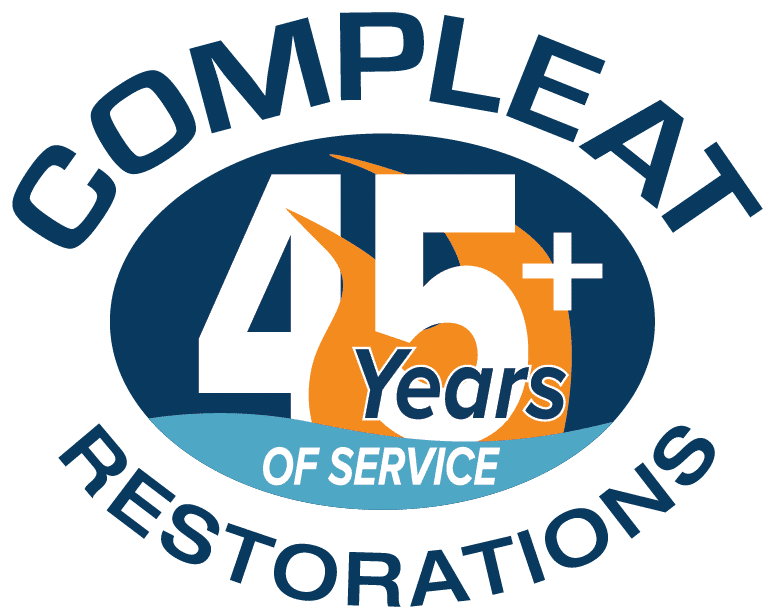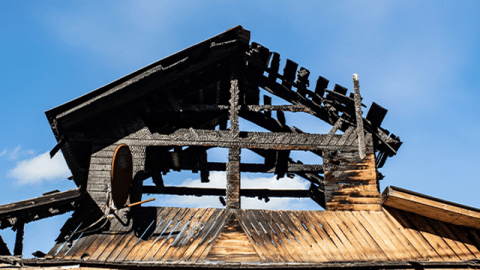Fire Damage Restoration
Fire damage restoration is the process of repairing damaged property and products, which were a result of fire or smoke. This process is undeniably complex as it involves removing corrosion, soot, and even the smell of smoke from the item for restoration.
Fire damage restoration isn’t exclusive to fires caused in a particular manner, or flames measuring a specific size. As long as your property and belongings have been damaged by any kind of fire, it is fit for restoration.
This article aims to explain all you need to know about fire damage restoration and what happens during the restoration process.
Causes of Fire Damage
Fire damage that sweeps through buildings and ruins lives happens all the time. There is a fire emergency every 24 seconds in America. Most of these occurred due to the following:
Cooking Accidents
It’s not difficult to fathom a blazing inferno that originates from the kitchen since most fire cases relate to this factor.
The primary reason kitchen fires are a common cause of fire damage is that it’s home to various heat sources, all potential fire initiators. These heat sources include toasters, stoves, ovens, or even microwaves. All you need to start a fire with a microwave is a minor malfunction.
Homeowners can reduce their fire risk in the kitchen by removing paper towels, grease, or oil from their cooking area. Something as small as a tiny spark could ignite any of these substances. Now you need fire damage restoration.
Electrical Malfunctions
Another common cause of fire damage is an electrical malfunction which most involves faulty wiring and a flammable substance. Wiring can result in an inferno when the wire, outlet, or power strip is overloaded, causing it to ignite nearby items that are susceptible to flames.
Fortunately, you can prevent a fire from occurring via this method by regularly checking your home’s wiring to be confident that they’re in good condition and can carry the electrical load you produce.
Flames
Open flames directly cause fire damage if they carelessly come in contact with flammable material. An excellent example of an open flame is a candle flame. While they may look visually appealing and give your home a royal touch, they increase your chances of having a fire outbreak.
This risk can be reduced with products that offer the same look but with lower risks. Use flameless candles or create dim lighting instead of burning candles.
Other Heat Producers
Other familiar heat sources can cause a fire, including fireplaces and space heaters. These items should be kept away from flammable materials like rugs and curtains as escaped coal or sparks could ignite these substances. Being vigilant about this can prevent you from having to call a fire damage restoration company.
Smoking
Many smokers enjoy the comfort of smoking indoors as it is relaxing and enables them to sit on their favorite chair and enjoy a few puffs. However, this action is dangerous as smokers can fall asleep. When this happens, they may drop their cigarette and ignite the nearest substance.
You can prevent this unfortunate occurrence by merely taking your cigarettes to a safe place outside your bed or living room.
Types of Fire Damage
1. Class A Fire Damage
Class A fire damage is widespread throughout the United States as it is the type of flame that stems from items like cloth, rubber, wood, or plastic. For example, if you keep fire too close to your stove or header and it ignites and spreads throughout the house, it’s a Class A Fire.
2. Class B Fire Damage
On the other hand, fire from flammable liquids like petrol, oil, gasoline, waxes, or even paint, appear in the Class B category. Therefore, if oil falls on your living room floor, ignites, and burns the entire room, it is recognized as a Class B fire damage.
3. Class C Fire Damage
Experts consider fires that originate from flammable gases like propane, butane, hydrogen, and natural gas as Class C fires. As one may guess, this fire often occurs in the kitchen since these flammable gases generally exist in the kitchen. Experts advise people to thoroughly inspect their gas cooker to make sure it has not leaked before turning it on as it may be fatal if leaks exist.
4. Class D Fire Damage
Firefighters identify a Class D fire damage whenever the fire originates from combustible metal like sodium, magnesium, and potassium. Naturally, these accidents often happen in a lab or industry and generally require commercial fire damage restoration.
5. Class E Fire Damage
Calls E fire damage is an interesting category as it is a combination of factors in Class A and B. Fires in this category happen due to electricity igniting a flammable substance, whether wood, wax, oil, or cloth. This type of fire happens due to faulty wiring, overloaded electrical outlets, and expired appliances.
6. Class F Fire Damage
Lastly, Class F fire damage happens when flames from fat and cooking oils in frying pans are left unattended or become uncontrollable and ignite. Since this fire naturally happens in the kitchen, firefighters often call them kitchen fires. They can require commercial or residential fire damage restoration, depending on whether the kitchen was in a home or at a restaurant, hotel, or other business.
Fire Damage Restoration
After a fire takes over your property, the first step in the fire damage restoration process is to board up the place. This prevents further damage by the elements. It also protects the space from looters and vandals.
What follows next is the removal of any large body of water that may gather in the house or room. The water may be due to burst pipes or water from firefighters when trying to extinguish the inferno. This fluid removal process is essential as it prevents further damage to the property due to moisture.
The removal of odor and emergency fire restoration cleaning comes next. The acidic and corrosive nature of soot can further damage whatever remains. Experts will also clean the property to look for essential items that survived the fire.
After assessment and inventory of the surviving items, experts will review the electronics, appliances, and furniture and see what is repairable. A professional dry-cleaning company can sort the surviving clothes and find ways to restore them to their original state.
Photographs, paintings, and statues will also need cleaning. While this process is complicated, it is possible with sophisticated and professional-grade tools.
Lastly, a professional building inspector will assess the property’s state and estimate its cost to restore it to its original form.
Do You Have Fire Damage?
Fire outbreaks usually occur due to accidents and mistakes. You may never need to think about fire restoration. However, if you fall victim to this situation, call our professional fire damage restoration team at (800) 699-1176 to restore your property now. We offer emergency services and are on call 24/7 ready to serve you.



